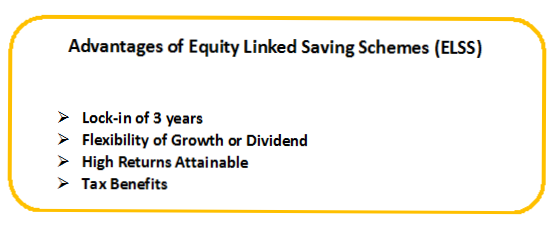Using Mutual Funds to Save for a Wedding: A Comprehensive Guide
Weddings are often one of the most memorable and expensive milestones in life. Whether you're dreaming of a small intimate ceremony or a grand celebration, the cost of a wedding can quickly add up.

To ensure that you are financially prepared, investing in Mutual Funds can be an effective strategy to save and grow your funds over time. In this article, we’ll explore how Mutual Funds can help you save for your dream wedding, with practical examples and insights to guide you through the process.
Why Choose Mutual Funds for Wedding Savings?
While saving money in a regular Savings Account is safe, it doesn't always offer the growth needed to meet larger Financial goals like a wedding. Mutual funds, on the other hand, provide an opportunity to earn higher returns through diversified investments in stocks, Bonds, or a mix of both. The key benefits of using mutual funds for wedding savings include:
- Higher Returns: Mutual funds have the potential for higher returns compared to traditional savings accounts or fixed deposits.
- Diversification: Mutual funds pool money from various investors and invest it in different assets, spreading the risk.
- Systematic Investment Plans (SIPs): SIPs allow you to invest a fixed amount regularly, making it easier to save and grow your investment over time.
How to Use Mutual Funds to Save for a Wedding: Step-by-Step
Step 1: Set Your Wedding Budget
Before you begin Investing, it's important to set a clear wedding budget. The average cost of a wedding in India can Range from ₹5 lakh to ₹30 lakh, depending on the type of wedding, location, and number of guests. Let’s assume you’ve set your wedding budget at ₹10 lakh.
Step 2: Determine Your Investment Horizon
Your investment horizon will depend on how much time you have before the big day. For example, if you plan to get married in 3 years, you have a relatively short time to accumulate your funds. In contrast, if you're planning for a wedding in 5 years, you have more time to invest and ride out Market fluctuations.
Step 3: Choose the Right Type of Mutual Funds
Mutual funds are divided into three major categories: Equity Funds, Debt fund, and Hybrid Fund. Here’s how to choose the best fund based on your time horizon and risk tolerance:
- Short-Term Wedding (1-3 Years): If you’re planning a wedding in the next 1-3 years, you may want to focus on debt funds or Liquid Funds. These funds are less volatile and provide stable returns. They are a safer bet if you're close to your wedding date and want to protect your Capital.
Example: If you invest ₹2 lakh in a debt mutual fund with an annual return of 7%, your investment could grow to approximately ₹2.22 lakh in 2 years.
- Medium to Long-Term Wedding (3-5+ Years): For weddings planned 3-5 years ahead, equity mutual funds can provide higher returns, though they come with increased risk. These funds tend to give better returns over the long term and can help you reach your target amount faster.
Example: If you invest ₹1 lakh annually in an equity fund with a 12% return for 5 years, your total investment could grow to approximately ₹6.35 lakh. This gives you ample time to grow your savings.
Talk to our investment specialist
SIP (Systematic Investment Plan) for Wedding Savings
One of the easiest and most effective ways to save for a wedding is by setting up a Systematic Investment plan (SIP). With SIPs, you can invest a fixed amount of money every month, regardless of market conditions. This helps in rupee cost averaging, where you buy more units of a mutual fund when the market is low and fewer units when the market is high.
Example: Let’s say you want to save ₹10 lakh for your wedding in 5 years. You can invest ₹15,000 per month in an equity mutual fund with a 12% expected annual return. At the end of 5 years, your investment could grow to around ₹10 lakh, assuming steady returns.
Fund NAV Net Assets (Cr) Min SIP Investment 3 MO (%) 6 MO (%) 1 YR (%) 3 YR (%) 5 YR (%) 2024 (%) ICICI Prudential Infrastructure Fund Growth ₹192.6
↓ -0.95 ₹8,232 100 -2.3 -1.1 -0.5 23.5 29.7 27.4 SBI PSU Fund Growth ₹32.8349
↑ 0.10 ₹5,714 500 2 2.8 2.4 26.8 28.1 23.5 HDFC Infrastructure Fund Growth ₹46.698
↓ -0.12 ₹2,586 300 -2.9 -1 -3.4 23.8 27.2 23 DSP India T.I.G.E.R Fund Growth ₹309.561
↓ -0.97 ₹5,506 500 -3.2 0.3 -7.5 23.2 26.9 32.4 Canara Robeco Infrastructure Growth ₹156.14
↓ -0.36 ₹936 1,000 -5.4 -1.4 -4.9 23.2 26.9 35.3 Nippon India Power and Infra Fund Growth ₹340.912
↓ -1.04 ₹7,530 100 -4.1 -0.7 -5.8 24.3 26.5 26.9 Franklin Build India Fund Growth ₹140.896
↓ -0.16 ₹3,088 500 -1.8 1.2 -1.8 24.6 26.4 27.8 LIC MF Infrastructure Fund Growth ₹48.4949
↓ -0.41 ₹1,054 1,000 -4.3 -2.4 -8.3 25.8 26.2 47.8 Bandhan Infrastructure Fund Growth ₹47.361
↓ -0.18 ₹1,625 100 -6.9 -5.4 -11.6 23.2 26.2 39.3 Invesco India PSU Equity Fund Growth ₹63.36
↓ -0.29 ₹1,466 500 -1.3 -1.2 -0.5 26.8 26.2 25.6 Kotak Infrastructure & Economic Reform Fund Growth ₹64.245
↓ -0.24 ₹2,425 1,000 -3.7 -0.6 -8.6 19.5 25.5 32.4 Note: Returns up to 1 year are on absolute basis & more than 1 year are on CAGR basis. as on 17 Dec 25 Research Highlights & Commentary of 11 Funds showcased
Commentary ICICI Prudential Infrastructure Fund SBI PSU Fund HDFC Infrastructure Fund DSP India T.I.G.E.R Fund Canara Robeco Infrastructure Nippon India Power and Infra Fund Franklin Build India Fund LIC MF Infrastructure Fund Bandhan Infrastructure Fund Invesco India PSU Equity Fund Kotak Infrastructure & Economic Reform Fund Point 1 Highest AUM (₹8,232 Cr). Upper mid AUM (₹5,714 Cr). Lower mid AUM (₹2,586 Cr). Upper mid AUM (₹5,506 Cr). Bottom quartile AUM (₹936 Cr). Top quartile AUM (₹7,530 Cr). Upper mid AUM (₹3,088 Cr). Bottom quartile AUM (₹1,054 Cr). Lower mid AUM (₹1,625 Cr). Bottom quartile AUM (₹1,466 Cr). Lower mid AUM (₹2,425 Cr). Point 2 Established history (20+ yrs). Established history (15+ yrs). Established history (17+ yrs). Established history (21+ yrs). Established history (20+ yrs). Oldest track record among peers (21 yrs). Established history (16+ yrs). Established history (17+ yrs). Established history (14+ yrs). Established history (16+ yrs). Established history (17+ yrs). Point 3 Rating: 3★ (lower mid). Rating: 2★ (bottom quartile). Rating: 3★ (lower mid). Rating: 4★ (upper mid). Not Rated. Rating: 4★ (upper mid). Rating: 5★ (top quartile). Not Rated. Top rated. Rating: 3★ (lower mid). Rating: 4★ (upper mid). Point 4 Risk profile: High. Risk profile: High. Risk profile: High. Risk profile: High. Risk profile: High. Risk profile: High. Risk profile: High. Risk profile: High. Risk profile: High. Risk profile: High. Risk profile: High. Point 5 5Y return: 29.68% (top quartile). 5Y return: 28.06% (top quartile). 5Y return: 27.23% (upper mid). 5Y return: 26.95% (upper mid). 5Y return: 26.89% (upper mid). 5Y return: 26.55% (lower mid). 5Y return: 26.42% (lower mid). 5Y return: 26.20% (lower mid). 5Y return: 26.19% (bottom quartile). 5Y return: 26.18% (bottom quartile). 5Y return: 25.51% (bottom quartile). Point 6 3Y return: 23.51% (lower mid). 3Y return: 26.83% (top quartile). 3Y return: 23.77% (lower mid). 3Y return: 23.23% (bottom quartile). 3Y return: 23.16% (bottom quartile). 3Y return: 24.25% (upper mid). 3Y return: 24.62% (upper mid). 3Y return: 25.76% (upper mid). 3Y return: 23.24% (lower mid). 3Y return: 26.78% (top quartile). 3Y return: 19.46% (bottom quartile). Point 7 1Y return: -0.49% (upper mid). 1Y return: 2.42% (top quartile). 1Y return: -3.40% (upper mid). 1Y return: -7.49% (lower mid). 1Y return: -4.91% (lower mid). 1Y return: -5.79% (lower mid). 1Y return: -1.81% (upper mid). 1Y return: -8.25% (bottom quartile). 1Y return: -11.64% (bottom quartile). 1Y return: -0.46% (top quartile). 1Y return: -8.63% (bottom quartile). Point 8 Alpha: 0.00 (top quartile). Alpha: -0.58 (lower mid). Alpha: 0.00 (top quartile). Alpha: 0.00 (upper mid). Alpha: 0.00 (upper mid). Alpha: -7.46 (bottom quartile). Alpha: 0.00 (upper mid). Alpha: -6.32 (bottom quartile). Alpha: 0.00 (lower mid). Alpha: -0.54 (lower mid). Alpha: -8.58 (bottom quartile). Point 9 Sharpe: 0.00 (upper mid). Sharpe: 0.09 (top quartile). Sharpe: -0.15 (bottom quartile). Sharpe: -0.33 (bottom quartile). Sharpe: -0.02 (upper mid). Sharpe: -0.12 (lower mid). Sharpe: -0.11 (lower mid). Sharpe: -0.04 (upper mid). Sharpe: -0.31 (bottom quartile). Sharpe: 0.09 (top quartile). Sharpe: -0.14 (lower mid). Point 10 Information ratio: 0.00 (lower mid). Information ratio: -0.57 (bottom quartile). Information ratio: 0.00 (upper mid). Information ratio: 0.00 (upper mid). Information ratio: 0.00 (upper mid). Information ratio: 0.57 (top quartile). Information ratio: 0.00 (lower mid). Information ratio: 0.40 (top quartile). Information ratio: 0.00 (lower mid). Information ratio: -0.60 (bottom quartile). Information ratio: -0.11 (bottom quartile). ICICI Prudential Infrastructure Fund
SBI PSU Fund
HDFC Infrastructure Fund
DSP India T.I.G.E.R Fund
Canara Robeco Infrastructure
Nippon India Power and Infra Fund
Franklin Build India Fund
LIC MF Infrastructure Fund
Bandhan Infrastructure Fund
Invesco India PSU Equity Fund
Kotak Infrastructure & Economic Reform Fund
200 Crore in Equity Category of mutual funds ordered based on 5 year calendar year returns.
Tax Implications for Wedding Fund Investments
When investing in mutual funds, it's important to keep in mind the tax implications on your returns. The two main types of Capital Gains tax applicable to mutual fund investments are:
Short-Term Capital Gains (STCG): If you sell your mutual fund units within 3 years of investment (for equity funds) or 3 years for debt funds, your returns are subject to short-term capital gains tax.
For equity funds: STCG is taxed at 15%.
For debt funds: STCG is taxed according to your income tax slab.
Long-Term Capital Gains (LTCG): If you hold your mutual funds for more than 3 years, the gains are taxed as long-term capital gains.
For equity funds: LTCG exceeding ₹1 lakh is taxed at 10%.
For debt funds: LTCG is taxed at 20% with indexation benefits.
This means that if you're investing for a wedding and plan to sell your funds before the 3-year mark, you’ll face higher Taxes on your returns. To minimize tax liabilities, consider staying invested for the long term.
Real-World Example: Rai’s Wedding Planning
Let’s take a look at a real-world example to understand how mutual fund investments can work for wedding planning.
Scenario: Ria wants to plan a wedding worth ₹12 lakh in 4 years. She decides to invest ₹20,000 monthly through an SIP in an equity mutual fund that offers an annual return of 10%.
Calculation:
- Monthly SIP investment: ₹20,000
- Expected Annual Return: 10%
- Investment Horizon: 4 years
After 4 years, Ria’s SIP would grow to approximately ₹10.96 lakh, making it very close to her wedding goal of ₹12 lakh. She can even adjust her SIP amount or consider shifting to more aggressive funds to reach her target faster.
Key Takeaways for Wedding Planning with Mutual Funds
- Start Early: The earlier you start investing, the better your chances of accumulating enough funds for your wedding.
- Choose Funds Based on Your Timeline: Use equity funds for long-term goals and debt funds for short-term goals.
- Use SIPs: SIPs allow you to invest smaller amounts consistently, making it easier to accumulate significant wealth over time.
- Consider Taxation: Be mindful of capital gains tax and invest with a long-term view to reduce your tax burden.
Conclusion
Planning a wedding requires not only emotional preparation but also sound financial planning. By investing in mutual funds, you can build a solid financial foundation for your dream wedding. Whether you opt for conservative debt funds or aggressive equity funds, mutual funds offer a range of options to suit your investment horizon and risk appetite. Start early, stay consistent with your investments, and soon you’ll be ready to walk down the aisle without financial worries.
All efforts have been made to ensure the information provided here is accurate. However, no guarantees are made regarding correctness of data. Please verify with scheme information document before making any investment.









